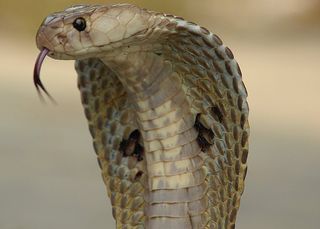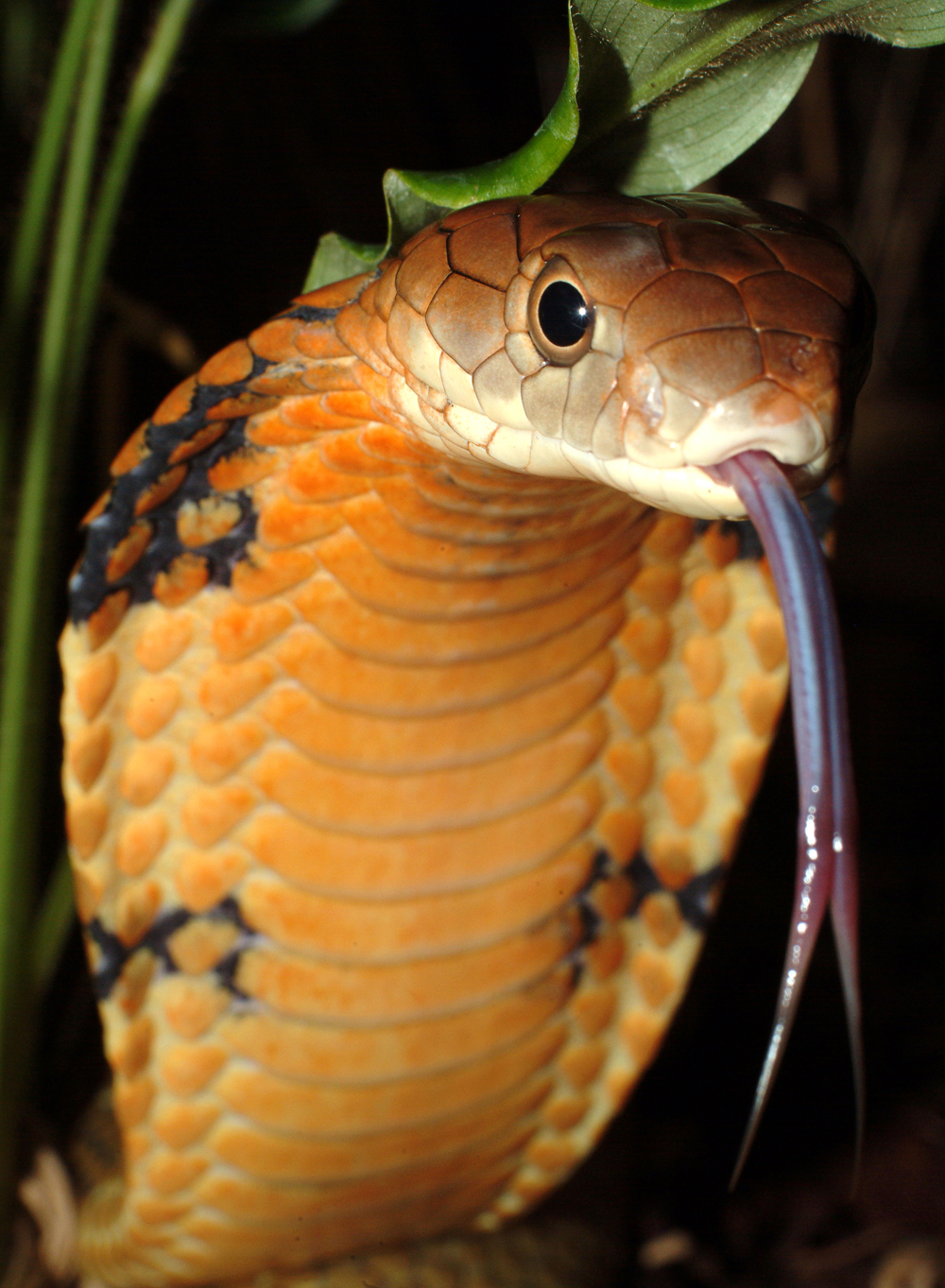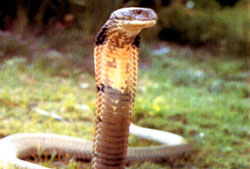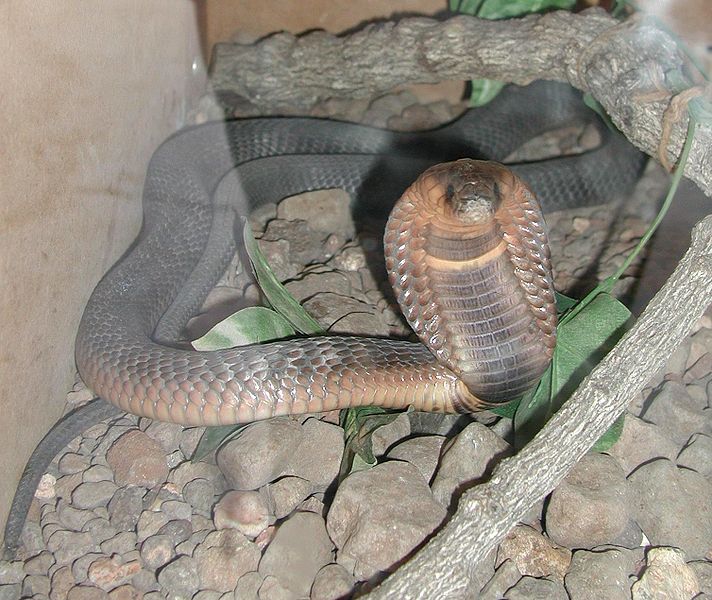Notice of Rights to Cobra Continuation Coverage
Facts About Cobras

Cobras, with their threatening hoods and intimidating upright postures, are some of the most iconic snakes on Earth. Their elegance, prideful stance and venomous bite have made them both respected and feared.
"Cobras occur throughout Africa, the Middle East, India, Southeast Asia, and Indonesia," said Sara Viernum, a herpetologist based in Madison, Wisconsin. The word comes from the Portuguesecobra de capello, which means "hooded snake."
There is some disagreement about what exactly a cobra is, and the number of cobra species ranges from 28 to about 270 depending on how a cobra is defined. Genetically, "true" cobras are members of the genusNaja, but according to Viernum, often "the name cobra references several species of snakes, most of which are in the venomous snake family Elapidae. Elpididae includes other snakes like coral snakes, kraits and mambas." Many of these snakes either possess hoods or the ability to raise the upper part of their body.
Cobra characteristics
Cobras are Elapids, a type of poisonous snake with hollow fangs fixed to the top jaw at the front of the mouth. These snakes cannot hold their fangs down on prey so they inject venom through their fangs, according to the San Diego Zoo. They have an excellent sense of smell and night vision. In addition to their trademark hoods, cobras have round pupils and smooth scales.
Colors vary widely from species to species. There are red, yellow, black, mottled, banded and many other colors and patterns of cobra.
Cobras are large snakes; many species reach more than 6 feet long (2 meters). According to Cape Snake Conservation, the forest cobra is the largest true cobra, reaching 10 feet (3 m), and Ashe's spitting cobra is 9 feet (2.7 m), making it the world's largest spitting cobra. The smallest species is the Mozambique spitting cobra, which is about 4 feet long (1.2 m). King cobras, the longest of all venomous snakes, can reach 18 feet (5.5 m).
"The most well-known distinctive physical characteristic of cobras is their hood," said Viernum. "Hooding occurs when the snake spreads out its neck ribs forming a flattened, widened section of its body near the head." This creates a stunning, and threatening, spectacle.

Habitat
According to Cobras (opens in new tab) by Sylvia A. Johnson (Lerner, 2006), cobras typically live in hot, tropical areas but are also found in savannahs, grasslands, forests and farming areas in Africa and Southern Asia. They like to spend time underground, under rocks and in trees.

Habits
"The most distinctive behavioral characteristics of cobras are their defensive displays," said Viernum. "These include hooding, hissing, and raising the upper portion of their bodies to stand erect. Most cobras can stand as tall as a third of their body length." In addition to signaling a willingness to attack, this behavior helps them search for food. Cobras may hiss loudly at predators and other threats, and some species also spit. "Spitting cobras are able to project venom from their fangs towards their perceived predators," said Viernum.
Cobras reproduce by laying eggs. Females typically lay 20 to 40 eggs at a time, which incubate between 60 and 80 days. According to India's SnakeWorld, cobras will stay near the eggs and defend them until they hatch. Wild boars and mongooses are known to steal cobra eggs.
The mongoose is the best-known enemy of the cobra. According to Cobras.org, mongooses have thick fur to protect against cobra fangs and often defeat cobras in fights using their speed and agility. They can bite the cobra's back before the snake can defend itself. Cobras are also threatened from other snakes and humans.
Cobras are typically opportunistic hunters, chowing down on whatever prey comes their way. Often, they eat birds, small mammals, lizards, eggs, carrion and other snakes. They slither through the wilderness silently, following their prey until they are ready to attack. According to the San Diego Zoo, most cobras hunt at dawn or dusk, though some species forage during the heat of the day.
Like other snakes, cobras have a very slow metabolism that allows them to go for days or even months without feeding.
Cobra bite
"Cobra bites can be fatal, especially if left untreated," said Viernum. Fortunately, antivenin is available and sometimes lives can also be saved with the use of an artificial respirator. Viernum explained cobras' neurotoxic venom's effects: "Like coral snakes, cobras have potent neurotoxic venom, which acts on the nervous system. Symptoms from a neurotoxic cobra bite can include problems with vision, difficulty swallowing and speaking, skeletal muscle weakness, difficulty breathing, respiratory failure, vomiting, abdominal pain, necrosis, and anticoagulation." [Related: 7 Shocking Snake Stories]
According to the University of Michigan, human victims may stop breathing just 30 minutes after being bitten by a cobra.
Some cobras, including all spitting cobras, have cytotoxic venom that attacks body tissue and causes severe pain, swelling and possible necrosis (death of cells and tissue). According to the American Museum of Natural History, spitting cobras also have the ability to shoot venom from their fangs directly into the eyes of the victim with terrifying accuracy. Venom in the eyes can lead to blindness if not washed out well.

Taxonomy/classification
According to the Integrated Taxonomic Information System (ITIS), the taxonomy of "true" cobras is:
- Kingdom: Animalia
- Subkingdom: Bilateria
- Infrakingdom: Deuterostomia
- Phylum: Chordata
- Subphylum: Vertebrata
- Infraphylum: Gnathostomata
- Superclass: Tetrapoda
- Class: Reptilia
- Order: Squamata
- Suborder: Serpentes
- Infraorder: Alethinophidia
- Family: Elapidae
- Genus: Naja
- Species: 20, including Naja melanoleuca (forest cobra), Naja ashei (Ashe's spitting cobra), Naja mossambica (Mozambique cobra), Naja naja (Indian cobra)
King cobra
The king cobra is an example of a snake with "cobra" in its name, but it is not a member of the Naja genus. The king cobra (Ophiophagus hannah) is the only member of its genus.
"The king cobra is the longest species of venomous snake in the world," said Viernum. Though they can reach lengths of up to 18 feet, Viernum said, their average length is 10 to 13 feet. Nevertheless, when they rear up the front third of their body under threat, the "stance can be quite high." An especially long snake could be as tall as a person, meaning that an angry king cobra could literally look you in the eye.
National Geographic (opens in new tab) compares their warning hiss to a growing dog. Though there are other snakes with more potent venom, the amount of neurotoxin that a king cobra can emit in one bite is enough to kill 20 people — or one elephant. Fortunately, king cobras are shy and avoid people.
King cobras are the only species of snake to build nests for their young, which they guard ferociously. According to the University of Michigan Museum of Zoology's Animal Diversity Web (ADW), nesting females may attack without provocation.
King cobras reside in trees, on land and in water, and are found in the rain forests, mangrove swamps, forests, and grasslands of southern China and Southeast Asia, according to the BBC. Their coloring varies from region to region.
According to National Geographic, king cobras are a popular species for snake charmers in South Asia, though the cobras cannot actually hear the music (being deaf to ambient noise). They are enticed by the shape and movement of the flute.
Additional resources
- Cape Snake Conservation: The Ultimate Cobra Snake FactsGuide
- Animal Diversity Web: King Cobra
- ADW: Indian Cobra
Source: https://www.livescience.com/43520-cobra-facts.html
0 Response to "Notice of Rights to Cobra Continuation Coverage"
Post a Comment